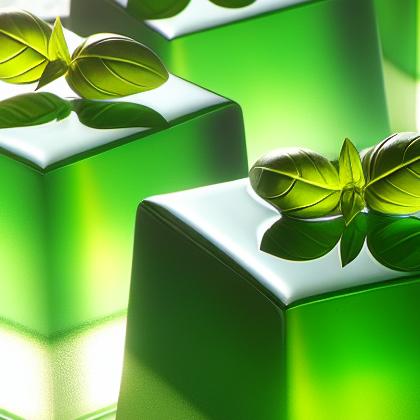Gelatin

Gelatin or gelatine (from Latin: gelatus meaning "stiff", "frozen") is a translucent, colorless, brittle (when dry), flavorless solid substance, derived from collagen obtained from various animal by-products. It is commonly used as a gelling agent in food, pharmaceuticals, photography, and cosmetic manufacturing. Substances containing gelatin or functioning in a similar way are called gelatinous. Gelatin is an irreversibly hydrolysed form of collagen, and is classified as a foodstuff. It is found in most gummy candies as well as other products such as marshmallows, gelatin dessert, and some ice cream, dip and yogurt. Household gelatin comes in the form of sheets, granules, or powder. Instant types can be added to the food as they are; others need to be soaked in water beforehand. Gelatin has E number E441.
Basil gelatin squares Pairs With:

Basil gelatin squares Properties:
| Food Property | Type | Description |
|---|---|---|
| Flavor Profile | Sweet | These basil gelatin squares have a subtle sweetness that complements the herbaceous flavor of the basil. |
| Bitter | The bitterness of the basil leaves is balanced out by the sweetness of the gelatin, creating a harmonious flavor profile. | |
| Texture | Firmness | The gelatin squares have a firm texture that holds its shape when cut into pieces. |
| Nutritional Value | Phytochemicals | Basil is rich in phytochemicals, such as flavonoids and polyphenols, which have antioxidant properties and potential health benefits. |
| Color | Natural Pigments | The vibrant green color of the basil leaves is preserved in the gelatin squares, adding visual appeal to the dish. |
| Aroma | Volatile Compounds | The fresh and aromatic scent of basil is released when the gelatin squares are cut, enhancing the overall sensory experience. |
Food Pairing App - Version 1.2.0
